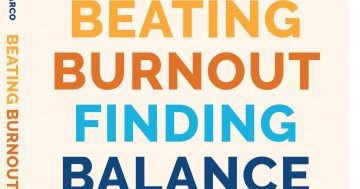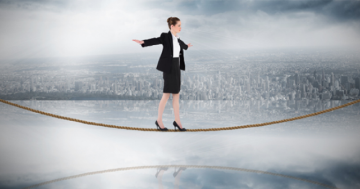Sarah Todd* says taking a holiday is unlikely to be enough to cure the exhaustion, stress and negative feelings that characterise burnout.

Image: Bing N.
Ahh, vacation!
A whole week in which to swim, sleep, lounge around with your paperback of choice, and recharge.
Surely, you’ll come back to work bursting with positive energy, ready to dive straight back into 12-hour workdays, unreasonable deadlines, an exploding email inbox.
Many of us expect that taking a holiday will be enough to cure the exhaustion, stress, and negative feelings that characterise burnout.
But it’s not a sustainable strategy.
Consider the tale of David Chang, founder of the Momofuku restaurant group and star of the Netflix series Ugly Delicious.
A 2008 profile of Chang in The New Yorker describes how the overworked celebrity chef once fell into a pattern of going on vacation to recover from health problems caused by work stress, only to return to his same old habits:
“Some time ago, his doctor told him he had high blood pressure and had to take a vacation, so he went to Costa Rica by himself and sat on the beach and read and felt better,” the article said.
“But then … one day he came into work feeling as if he were dying, and his left cheek went numb.”
“He went to the emergency room, but they couldn’t figure out what was wrong.”
“The next day, he lost his hearing in his left ear and had a terrible pain in his jaw.”
“Then his face became covered in spots that hurt, so he went to a dermatologist, who told him that he had shingles, and that it meant he was dangerously tense.”
As Chang discovered firsthand, if you’re suffering from chronic stress at your job most weeks of the year, finding occasional respite at a beachside location or an urban oasis simply won’t balance out all the bad stuff.
“Unfortunately, the duration of most vacations, one or maybe two weeks at best, is insufficient time to decompress and counter the effects of real burnout,” says Liane Davey, an organisational psychology expert.
So much for the afterglow
Vacations are important, of course.
But while a week or two away from the office can certainly feel restorative in the short-term, research shows that the vacation afterglow tends to fade away fast.
In a 2018 American Psychological Association survey, two-thirds of respondents said that the mental benefits of vacation had disappeared within a few days.
Part of the problem, to be sure, lies in the work that continues to mount up for employees while they’re out of the office.
But even if you work for an outfit that takes steps to prevent the dreaded pile-up, there’s still a fundamental problem with trying to cram a year’s worth of your built-up need for reflection and relaxation into a limited window of time.
Instead, organisational experts say we need to prioritise taking breaks from work all the time, not just on special occasions.
“The research shows that you have to build in small [they can be very small] breaks during your day and then after work hours,” Paula Davis-Laack, an organisational consultant, tells Quartz.
That means not just carving out 30 minutes for a proper lunch break, but also remembering to get up from your desk throughout the day.
Davis-Laack tells Fast Company she recommends a break of five to 10 minutes for every 90 to 120 minutes of work.
When vacation triggers an existential crisis
Burnout isn’t just caused by logging too many hours or juggling too many responsibilities — it can also be the result of a deeper unhappiness with your job.
A vacation may help you gain a temporary sense of distance from those problems, but it won’t solve them.
And perversely, lying on a hammock under the stars and listening to the chirp of crickets may even worsen your occupational angst.
That seems to be what happened to Chang; he came to realise he needed to work differently and took a step back from the kitchen.
“The trouble was,” The New Yorker article explains, “although not being in the kitchen removed one cause of stress, it replaced it with another.”
Chang missed cooking every day; in trying to take a step back from work, he lost his sense of self.
This type of situation is precisely why one of the first steps to solving burnout is to “reconnect with what you really like about the job,” according to Davey.
“Have a conversation with your manager about which work charges your batteries and which depletes them.”
“Look for opportunities to increase the tasks that energise you.”
In Chang’s case, for example, his entire identity was staked on cooking — so it’s no wonder that the earlier attempt to change his work style didn’t really take.
As a 2018 interview with The Wall Street Journal makes clear, Chang is still a workaholic who’s constantly taking on new projects and veering dangerously toward burnout.
But the way he talks about his efforts to create balance — for himself and for his restaurant employees — is a reminder that the solution to work stress is not a quick trip to the beach, but an ongoing effort to evaluate the everyday circumstances that take a toll on our physical and mental health.
* Sarah Todd is a senior reporter at Quartz. She tweets at @SarahLizChar.
This article first appeared at qz.com.











